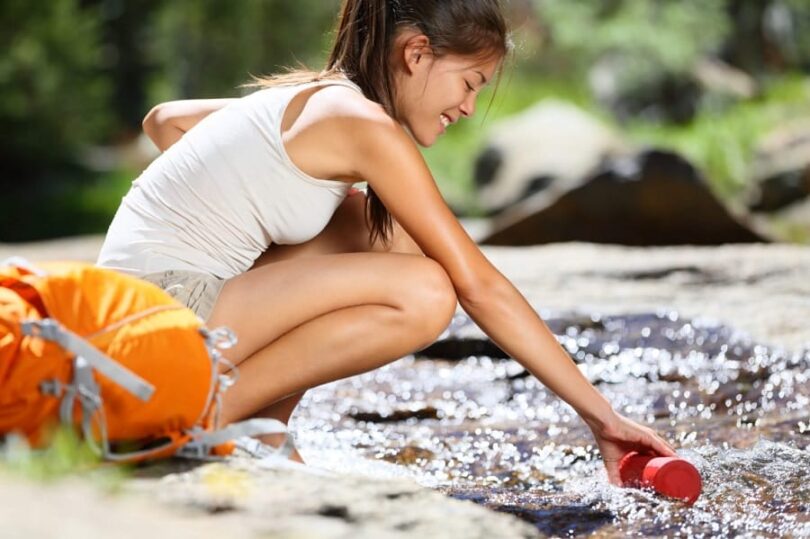When survival experts are asked what their top priority is when faced with an emergency survival situation, one answer always comes back first; water. It is important that anyone regularly exploring the bush can easily find and disinfect enough water to drink and utilize for wound cleaning or cooking should situations take a turn for the worse.
You never know when you’ll need these skills. So whether you’re anticipating a real life crisis situation, or just want to feel a little bit more like Robinson Crusoe, this article has everything you need to know about survival water purification.
The human body can only survive three days without drinking water. That’s not long at all so it’s fortunate that there is usually an abundance of water sources around – for those who know where to look. Unless you’re in the desert (and there are ways to survive that too) chances are there will be water around for you to use.
The first step in getting drinking water ready is to find a water source. Only after choosing a decent water source can you go on to utilize our techniques for water purification. So, how do you find one?
Selecting A Safe Water Source
Beggars can’t be choosers meaning that often you do not get a choice between water sources. But if your water is a dirty puddle or salty swamp, consider looking elsewhere for at least a little while before settling for what you’ve got.

Stagnant water sources that don’t run into any other waterway are usually the most rampant with nasty bugs. Your ideal find is a mountain spring. Barring that, flowing rivers are also usually pretty good too.
So take a look around, there may be a better water source than a puddle just around the corner.
The best way to find a water source is to use your basic senses of sight and hearing.
- Sight: Try climbing to a high point to scan the landscape for any signs of waterways. Don’t climb a tree though as if you’re in a survival situation accidentally injuring yourself can be a fatal problem.
Also, if you’ve already got a water source but are just scouting out for a better one, considering how much energy you’ll spend climbing that hill for the viewpoint.
If it’s more than a couple of hours walk, wait until you’re well rested and have ample energy resources to complete the trek. In the wild, energy IS your currency. You pay the wild with it to survive. The wild gives it back to you in food and water. - Hearing: You can also try closing your eyes and concentrating on listening out for the sound of bubbling or flowing water.
This works especially well if you’re in a densely forested area where seeing more than a few feet in front of you is nigh but impossible. Follow your ears to the nearest water source.
Should you be unable to find a river or a mountain spring, there are other options to choose from. You could try catching rainwater, sleet, snow or dew.
Fresh rainwater that hasn’t fallen through too many branches, and melted ice, are the only water sources that can usually be trusted to drink as is. The rest of your water sources ought to be treated as “non-drinkable” until you can disinfect them using any of the following survival water purification methods.
Techniques for Safe Drinking Water
UV Light Sterilization
Water in the wild is usually infected with thousands of micro-organisms. These micro-organisms are surprisingly badly affected by UV light which damages their DNA within just seconds of exposure.

There are a variety of devices available on the market that you can carry with you to emit enough UV light to sterilize water well. The best ones are battery free and power by your hand’s kinetic energy.
Opting for a kinetic energy-powered device instead of a battery powered one can seem more inconvenient, but it also means that you aren’t reliant on batteries which can run out. Kinetic energy can be counted on to power your device whenever you need it which is crucial in a survival situation.
Note: This method is best for clear water as water that has big obstacles in it (e.g. sticks) can provide shadows for micro-organisms to hide away from the UV light in.
Boiling Water
This age old trick is still the most reliable way to kill all the different bugs present in water. The high temperatures reached by water at the boiling point will eliminate almost all living organisms in it, especially if kept heated for eight to ten minutes.
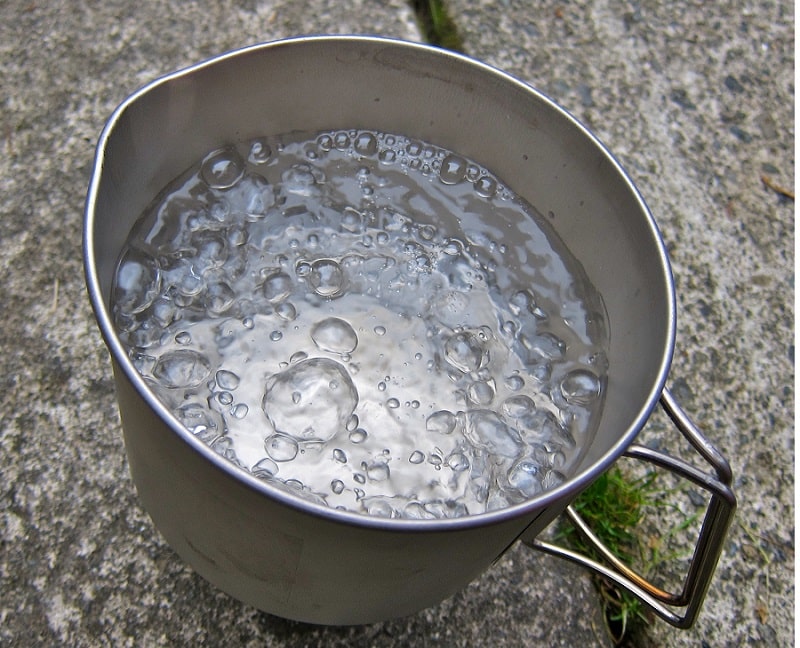
A good trick for those without a fireproof pot to hang their water over the campfire in is to heat rocks in the fire for 40 minutes and then place those rocks in your container of water. Remember that quartz and rocks from rivers will explode when heated, so try to find some inland “regular” rocks for this.
Note: Rock heated water won’t be as clean as water fully boiled, but it should still help a lot more than nothing. Also, do keep in mind that boiling water can’t get rid of chemical pollutions. But hopefully, if you’re close enough to civilization for chemical pollution to be a problem then you can find somebody nearby to ask for a drink.
Chemical Tablets
The easiest way to disinfect water is by using iodine tablets. These can be very useful to keep in your camping or survival kit and have a 99% effectiveness rate against water-based pathogens. Some tablets last longer than others so it’s important to read the labels when buying.
If you’re stocking up a cabin it might be worth paying a little extra for tablets that won’t expire within the next two years. Cheaper short-term options are also available for those just going out on a weekend camping trip.
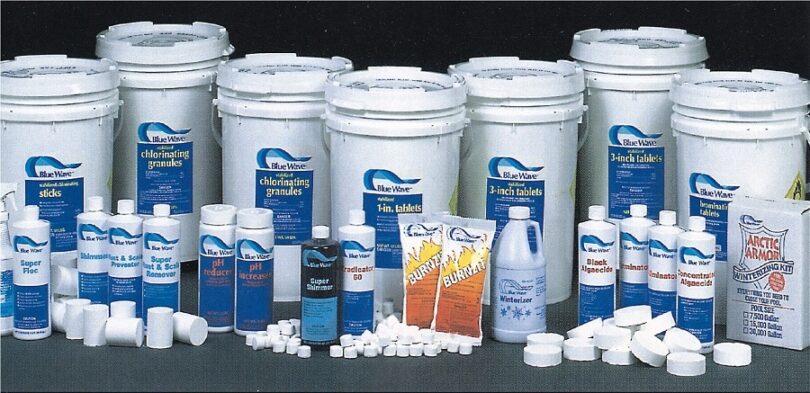
Having these tablets can provide wonderful peace of mind as you know that wherever you go, you’ll be able to create safe drinking water.
Note: Unfortunately, iodine tablets can be slightly toxic and produce a rather distasteful flavor. We do not recommend them for pregnant or lactating women, or anyone with thyroid issues.
Additionally, if your children aren’t used to eating, or in this case drinking, what they’re given, then they may throw up a bit of a fuss. There have been several cases of children becoming severely dehydrated from refusing to drink iodine cleansed water.
In order to avoid these issues, you could try the chlorine-based tablets which can take longer to work, but have a distinctly better taste. At the end of the day, they both do their job well, which is to provide you with clean drinking water wherever you are.
General Use Items
This solution follows on from the idea of using chemicals to purify water, only it’s not tablets we’re using here. Both bleach and iodine (commonly found in laundry kits and first aid kits) can be used to disinfect water.
In general, we would not recommend these options unless you are truly desperate for clean water. If necessary, you can add about four drops of bleach to a quart of cold water or two drops to a quart of warm water.
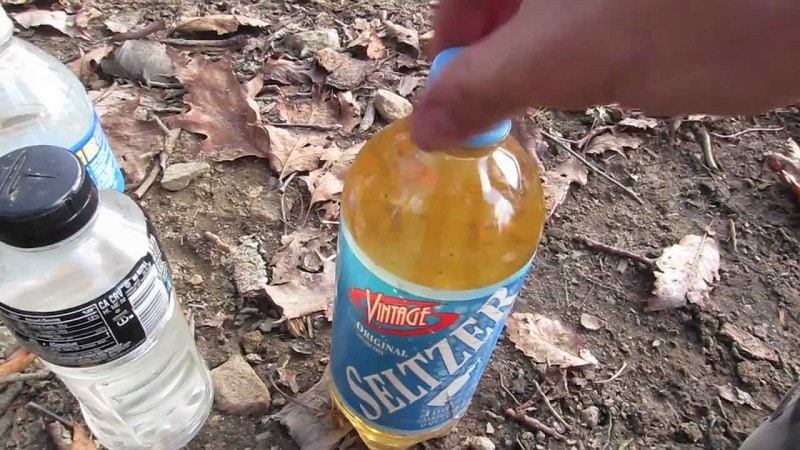
You will then need to put a lid on your water container and shake it vigorously for a few minutes. This should enable the chemicals to do their job and kill most of the nasty bugs within the water.
To use iodine, even fewer drops will be necessary – we are talking very minute amounts here. Make sure the iodine you’re using for drops comes from a 2% concentration bottle (iodine isn’t usually sold in its pure form).
Note: Don’t try this method unless you need to, and never use iodine and bleach mixed together to cleanse your water.
Distilled Water
When done properly, distillised water is the safest water cleansing method available. Water in the wild can contain lots of natural contaminants, the vast majority of which can be avoided via distillation. During distillation, water is heated to the point of evaporation.
The resulting steam is then captured in a container placed above the steam. Droplets will form on this container which can be placed at an angle so that the droplets roll down it and into another container.
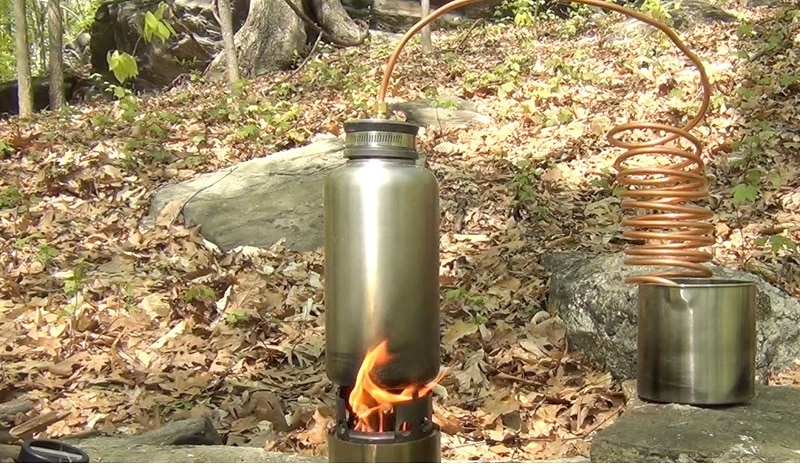
It can take a long time for drops to form a cupful amount of water. But if you’re patient, at the end of this very long process you’ll have a container of liquid gold. Many people choose to go away and do other things while their water is being distilled. Just make sure the fire heating your water is well contained and won’t go out while you’re away.
Note: Of course, like most decontamination methods there are particles that can get past the line of distilled water’s defenses.
These include a few volatile oils and organic compounds. Most of the big scary stuff should be filtered out, though. In general, distilled water is one of the safest options to use for water purification if you find yourself in a tight spot with lots of time.
Solar Water Disinfection
This water treatment method uses direct sunlight to disinfect dirty water. You can leave clear water bottles outside in the sun for at least one day and by doing so harness the sun’s energy to cleanse them.
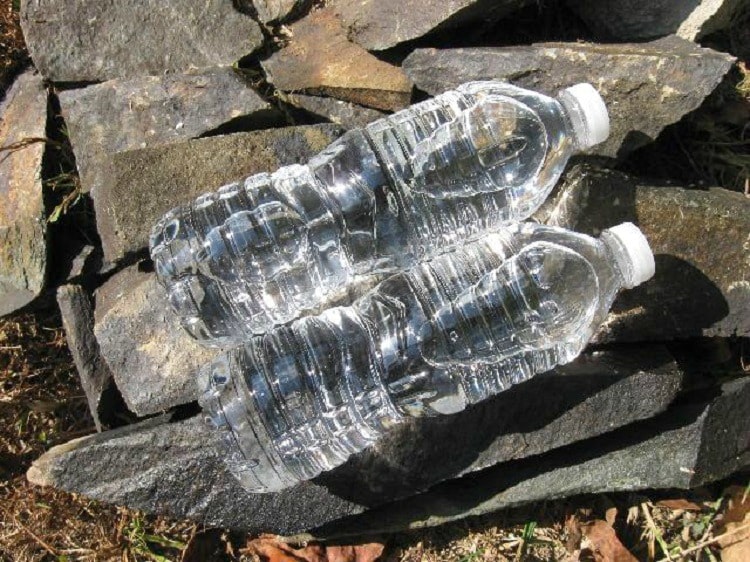
The UV rays of sunlight will severely damage and kill most of the bacteria and viruses in your water. This is definitely one of the easiest water purification methods if you find yourself in a sunny area. It doesn’t require any dangerous chemicals and can be left to complete itself while you tend to other survival necessities such as obtaining food.
Note: There is a 2 liter maximum per bottle amount of water than can be cleansed via sunlight at once, and this method doesn’t work for chemical cleansing. Nevertheless, provided you don’t have rain or overcast skies, cleansing water with sunlight is an easy and affordable option for water purification.
Filtration Straws
Filtration straws are a special, thin type of water filter recently released to the wilderness survival kit marketplace. They are designed, as their name suggests, to be used as a straw with which to suck up dirty liquid.

As the water passes through the straw it is filtered through an activated carbon filter element which cleanses the water of pathogens and bacteria. It’s that simple.
Note: Don’t expect filtration straws to filter out every single bacterium or virus as some may still get through. It’s best to opt for clear, cold water when using these straws in order to get maximum water cleansing effectiveness from them.
Water that’s been lying in a puddle all day and is warm is not the best choice for a water source when using straws as purification.
IV Bag
One of the main types of water filter used nowadays is the drip/suction filter. These filters pump water through a filtration cartridge.
They are likened to IV bags because many of them use gravity drip setups to work, though there are some that can simply be placed in the center of a hydration bladder hose.
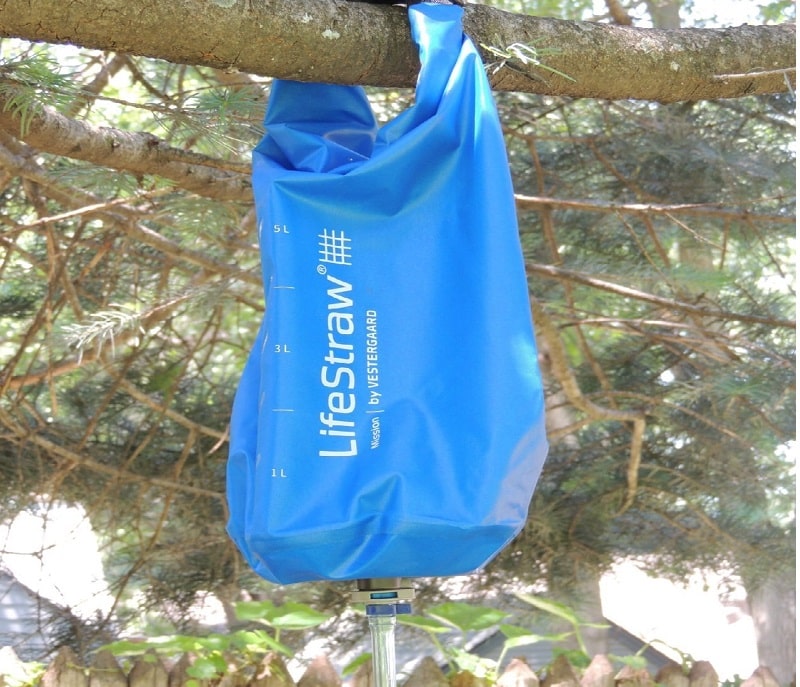
The advantage of the hydration bladder hose alternative is that users can just suck the water through the filter like they would a straw.
The advantage of the alternative gravity fed system is that it can slowly accommodate and cleanse dripping water while you’re away, giving you an amazing fresh glass of water to come back to. These filters usually work by using ceramic filters to get rid of large pathogens, and then silver parts to kill or damage viruses and other microorganisms.
In terms of water flow, you’re looking at about a quart per minute. So you can’t shower with this. But you can definitely get a good drink.
These Methods Could Make All The Difference
Drinking water of questionable purity is definitely a high stakes gamble. Even when taken from clear springs, water can be infected with all sorts of microscopic horrors. Unless you are truly desperate, do not drink unprocessed water. If you can think of any ways to cleanse the water you should attempt these before giving in to your thirst.
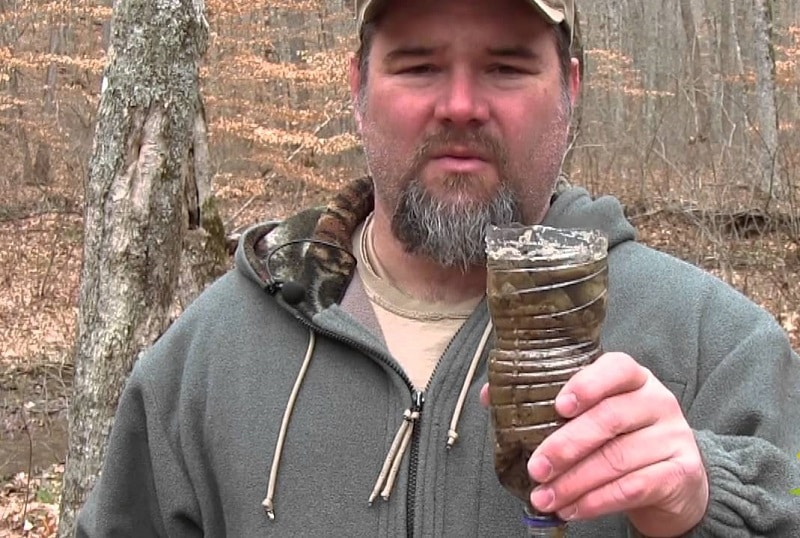
The above are a variety of tried and true water purification methods that you can choose from. This is an essential knowledge bank to have in order to stay alive in the wild. We recommend you pick a few that you can prepare for (e.g. purchasing tablets) before going out trekking.

